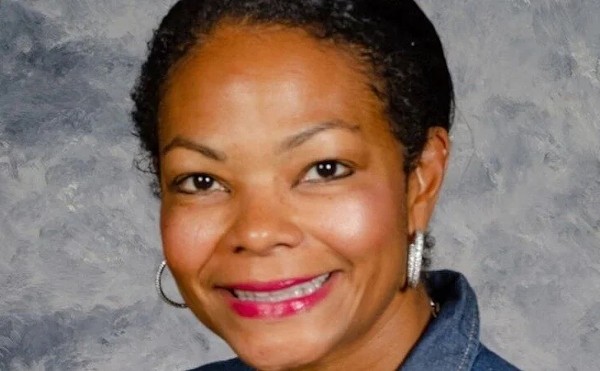Writer Jerry Siegel and artist Joe Shuster created Superman, the first costumed superhero, as Cleveland teenagers. Years later, in 1938, they sold most of the rights to the character to DC Comics for a mere $130. DC continued employing the two to script and draw Superman, and they made good money — but the publisher made more. The two eventually sued DC, attempted to reclaim the rights to the great American hero. In 1948, a disappointing settlement netted them some cash, but DC stopped providing work for the two, and they fell on hard times.
Jerry was able to find work as a writer and editor. He was hired for a large salary at Ziff-Davis, and then at Famous Funnies, in hopes that the Superman lightning would strike twice. When this didn't happen, Siegel was quick-as-lightning fired.
Joe had an even harder time. The comic-book industry was shrinking from attacks by do-gooders and competition for kids' eyeballs from television. Superheroes, so vital to the World War II period, were vanishing from the scene. Now romance, animation-inspired funny animals, western, crime and horror comics were competing for attention. Adding to Joe's problem was that his diagrammatic style was thought of as archaic. There were strong, second generation comic-book artists like Wally Wood, Frank Frazetta, Bob Powell and Jack Kirby filling the panels with virtuoso art.
A contemporary cartoonist of Shuster's, Gill Fox, shared with me that "Joe became a delivery boy for a printer, and one day had to bring some printing proofs to the DC offices. The publisher, Harry Donenfeld, spied him in the lobby, slipped him a mere twenty bucks and instructed him to never make deliveries there again."
In early 1954, Joe's career took yet another turn. He illustrated kinky tales of adventure, bondage and torture in sixteen booklets, Nights of Horror, along with a handful of other lurid titles. The publishing company was Malcla. The "Mal" of Malcla was Eugene Maletta, a printer in Queens operating out of his father's basement. In an interview for this book, Maletta recalls that the "Cla" of Malcla was a "Clancy," the writer of Nights of Horror. Clancy's writing for these potboilers consisted of purloining stories from old, spicy pulps. Professor of Erotology and Sexology at the Institute for Advanced Study of Human Sexuality Dr. C. J. Scheiner, who has been called "one of the world's foremost authorities on erotica," told me he met the co-publisher "Cla" (as he refers to him) when he bought his book collection. Scheiner reports that "the co-publisher detailed how he got his neighbor, the nearly blind and totally broke Shuster, to do the job and also the fate of the original drawings."
In Nights of Horror, there was little of the heroism and virtue of Superman, but all of the villainy and tension. There was spanking, flagellation, bloodletting, humiliation, teenage sex cults, torture devices, exhibitionism and voyeurism (not to mention lesbianism and interracial sex), though little nudity. These BDSM (bondage-discipline dominance-submission sadism-masochism) tales were an equal opportunity employer. Women were tied up, whipped and spanked, but could eagerly be the tie-ers, whippers and spankers too.
The art was technically some of Joe's best. It was pure Shuster work, without assistants or ghosts. It employed fine pen-and-ink work embellished by a favorite tool of the artist's, lithographic pencil. Despite his weak eyesight handicap, Joe pushed, and the results were sure and strong. Shuster always had a great ability to render attractive women, though in Nights of Horror, they are often more sad victims than sassy vixens.
Some of the characters look like dead-ringer, bizarro versions of Superman/Clark Kent, Lois Lane, Jimmy Olsen and Lex Luthor. Of course, we know it's not really them, but these drawings smack of the citizens of Metropolis gone wild.
Marya Mannes lambasted the writing of Nights of Horror in The Reporter Reader in 1954 as "cigar-store Spillane, more explicit in its sadism, more viciously saccharine in its romantic passages." The stories, like "Blood Lust," "The Flesh Merchants" and "The Bride Wore Leather," were bylined by Clancy's salacious pseudonyms, like Ted Rand, Wood LaCrosse and Rod Lashwell. The S&M scenarios had pulp-type villains, scantily clad damsels in distress and even a few handsome heroes, though they usually didn't get there just in the nick of time.
The 5½-by-8-inch Nights of Horror had the most amateur production values imaginable. The copy wasn't professionally typeset; it was right out of an ordinary typewriter with clogged-up keys. The sometimes illegible reproduction was a horror in itself. But all this actually gives Nights of Horror some populist appeal. The rudimentary black-and-white printing even foretells the feel of '60s underground comix.
When shown Nights of Horror illustrations, comic-book historian Ron Goulart said, "I missed this phase of Joe Shuster's career the first time around. It's somewhat sad to see the guy who co-created Superman ending up drawing for what obviously must've been low-paying markets. There's no doubt that this is Shuster's work. Most of the women look like Lois Lane, though better endowed. The chap slugging the bearded lecher [pages 116–117] strikes a pose often utilized by the young Superman as well as private eye Slam Bradley in Detective Comics. The lad who is being led astray by the smoking blonde [page 55] looks like a jaded Jimmy Olsen."
Bill Blackbeard, founder-director of the San Francisco Academy of Comic Art and editor of The Smithsonian Collection of Newspaper Comics, asserts that Nights of Horror is "a god-awful discovery, but obviously something done in loathing and despair to bring in desperately needed bucks. To my scalded eye, the work is undeniably Shuster's, something almost certainly undertaken for a fly-by-night publisher."
Dr. Bradley Ricca, Ph.D., from the Department of English at Case Western Reserve University and a Siegel and Shuster historian, has a more positive take. "Nowhere is Joe identified as the artist. That being said, it is definitely him. Not only in the way the squints of the eyes and jaws are drawn, but also the foreshortened limbs and the use of pencil. It is also seemingly some of his best work! This shows he wasn't completely blind at this time."
Did Joe Shuster have to take on Nights of Horror? Other comic-book artists were struggling, but finding work in advertising, education and industry. Was creating pornography an act of financial desperation? Or was drawing characters who looked like their famous counterparts, only in compromising situations, an act of retribution? Or is it possible that there was something in Joe that enjoyed this type of fantasy material?
Are there any clues to be found in what we know about Shuster's romantic relationships? We do know of a few of the women in Joe's life.
Jolan Kovacs, Joe's first muse, changed her name to Joanne Carter when she became a full-time model. She posed for painters, illustrators and photographers in Philadelphia, Boston and New York, and was a cigarette girl in a West Coast club. Joanne, an attractive and strong woman, was encouraging and loyal to Jerry and Joe. "To me she was Lois Lane," Joe said in an early 1980s interview. In the same article, Joanne tells of going on a date with Joe to a National Cartoonists Society costume ball. It was at the Plaza Hotel, in New York, in 1948. "Joe took me down to the Brooks costume company and rented an enormous ball gown for me so I looked exactly like Dixie Dugan [a popular comic-strip character of the time known for her stylish clothes]. Jerry and Joe were having problems at the time — there was litigation — and I just didn't feel like going as Lois Lane under those circumstances." Joanne came with Joe but left with Jerry Siegel. "After this reunion at the ball, Jerry and I started dating, and a few months later, we were married."
Joanne reveals, "I never did any fashion modeling; I was never tall enough. I wanted to grow more, but this was as high as I got." Maybe her lack of height is why Joe seemed to be content that his "Lois" went off with Jerry rather than him after the ball.
Jerry Robinson recalls, "Joe and I double-dated a number of times. He was shy with women and I guess it's no secret to say that he loved tall, beautiful, intelligent women. I don't think that is uncommon among very short men. I think maybe it adds to their stature. I remember one time I got him a date with one of my cousins, who was a brilliant girl. I think she graduated first in her class of over one thousand students, and she was very attractive. We had a lovely evening. When we got back to my place and I said, 'Well, did you have a good time — how did you like my cousin?' Joe says, 'Oh, yeah, she was great, but she was too short.'"
Dr. Bradley Ricca interviewed Joe's sister, Jean Shuster-Peavy. She confided, "Actually, Joe loved tall, beautiful showgirls and models, and he dated a lot of them! He was what you call a 'Stagedoor Johnny.' He dated a lot of models — beautiful ones — he'd just pick the most beautiful models and girls!"
Ricca shared a little-known fact: "Joe was married in 1975 to Judy Calpini, a Las Vegas showgirl. They married in San Diego; Jerry and Joanne were there. The marriage lasted maybe only a few months, I think. That was the only time he married." This was apparently such a blip in Joe's life that, later, Joanne Carter told an interviewer, "He never married."
Whether his motive was for love or for money, Shuster could never have imagined the nights of horror that lay ahead.
Reprinted with permission from Abrams












